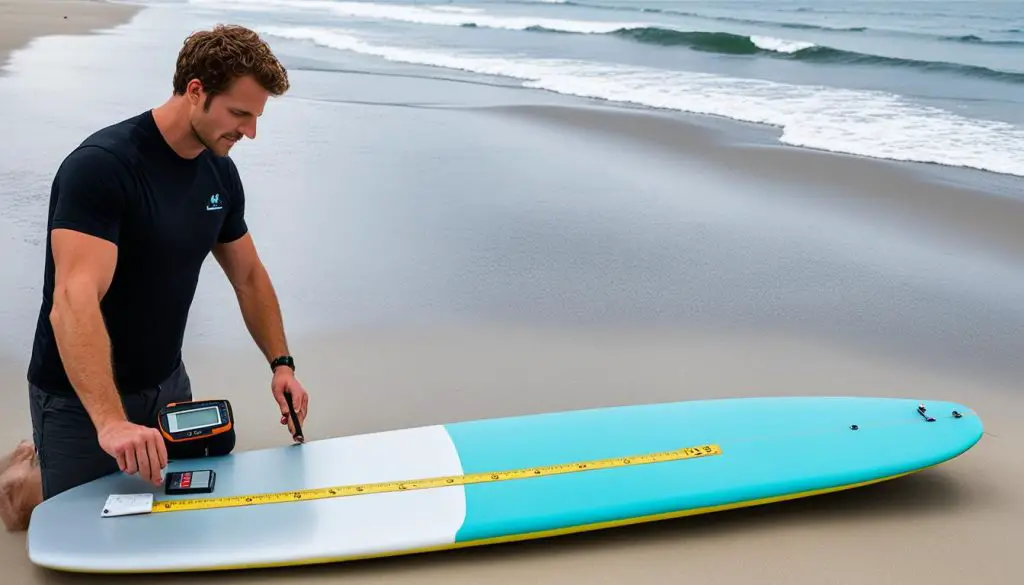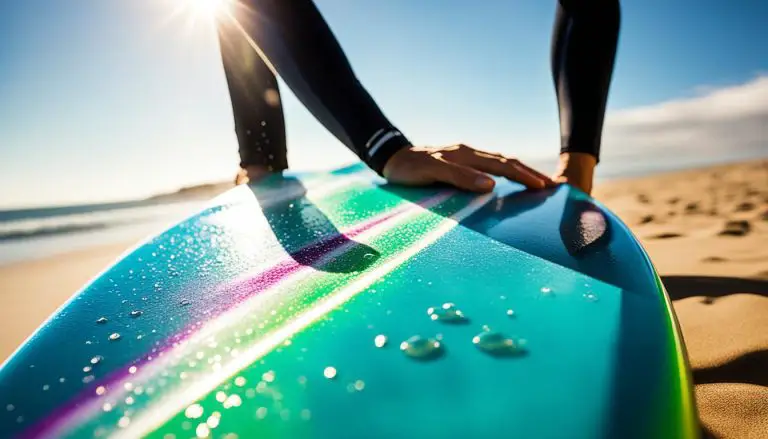How to Choose the Right Surfboard for Small Waves
Choosing the right surfboard is crucial for a great wave-riding experience, especially when it comes to small waves. When selecting a surfboard for small waves, factors such as board design, size, shape, and volume play a significant role in determining its suitability. It is important to consider your surfing skill, surf conditions, and your own fitness level when choosing the perfect surfboard.
In this article, we will provide valuable information on different surfboard designs, sizes, and models to help you make an informed decision. Whether you’re a beginner or an experienced surfer, understanding the right surfboard for small waves will enhance your enjoyment and performance in the water.
Small Wave Surfboard: Finding the best surfboard for small waves starts with understanding its design and volume. The size of the surfboard determines how well it can handle smaller and slower waves. A smaller board with less volume allows for better maneuverability, while a larger board with more volume provides stability for catching and riding smaller waves.
Surfboard Design: The design of a surfboard greatly impacts its performance in small wave conditions. The shape, tail design, and rocker of the surfboard all contribute to its ability to generate speed, control, and maneuverability. Different design elements, such as fish-shaped boards, hybrid models, or high-performance shortboards, offer unique advantages for small wave surfing.
Surfboard Volume: Surfboard volume refers to the amount of space the board occupies and plays a crucial role in determining its buoyancy. Calculating the ideal volume based on your weight and skill level is essential when selecting a surfboard for small waves. Recommended volume charts are available to help you determine the right surfboard volume for optimal performance.
Surfboard Shape: The shape of a surfboard, including the nose shape and tail shape, affects its maneuverability and control in small waves. Different tail shapes, such as pintails or squash tails, offer specific advantages for small wave surfing. Understanding the impact of shape and design will help you choose a surfboard that suits your style and preferences.
By considering factors such as surfboard size, design, volume, and shape, you can confidently select the right surfboard for small waves. Stay tuned for the next sections where we will dive deeper into surfboard brands, sizing, and more. Let’s make the most of your small wave surfing experience!
Surfboard Brands, and Variety
When it comes to choosing a surfboard, the variety of surfboard brands available in the market is vast. With thousands of different types of surfboards to choose from, each with its own unique design and features, it can be overwhelming to make a decision. However, doing your research and understanding the different brands and models available is essential.
Board design and sizing are crucial factors to consider when buying a surfboard. Thanks to advancements in technology, accurate computer simulations can now determine how a board will perform in various wave and surfing conditions. By being knowledgeable about surfboard brands, variety, design, and sizing, you can gain an edge when selecting the right surfboard for small waves.
With this wide range of surfboard options, you’ll have the opportunity to choose from a variety of brands, each offering its own unique features, design elements, and performance characteristics. Whether you’re a beginner or an experienced surfer, finding a surfboard that suits your individual needs is crucial to maximize your enjoyment in small wave surfing.
Let’s take a look at a table that highlights some popular surfboard brands and their key features:
| Brand | Design | Features |
|---|---|---|
| 1. Channel Islands | Performance shortboards | Advanced materials for maximum responsiveness |
| 2. Firewire | Eco-friendly construction | Enhanced durability and performance |
| 3. Lost | Variety of shapes and styles | Customizable options for individual preferences |
| 4. Rusty | Progressive designs | Optimized for high-performance maneuvers |
| 5. … | … | … |
These are just a few examples of the many surfboard brands available today. By exploring different options and considering factors such as board design, features, and materials, you can find a surfboard that suits your style, skill level, and small wave conditions. Remember, choosing the right surfboard will greatly enhance your surfing experience.
Surfboard Volume and Ideal Size
Understanding surfboard volume is essential in choosing the right surfboard for small waves. Volume, which refers to the amount of space a surfboard occupies, plays a crucial role in determining its buoyancy, stability, and performance. To calculate surfboard volume, factors such as length, width, and thickness are taken into account.
Calculating your ideal surfboard volume is a personalized process that considers your individual characteristics, including weight, height, skill level, and fitness level. By understanding your ideal surfboard volume, you can select a surfboard that suits your needs and skill level, maximizing your enjoyment in small waves.
To assist in determining the ideal surfboard volume, there are several recommended volume charts available based on weight and skill level. These charts provide valuable guidance on the optimal volume range for various surfers. By referencing these charts, you can make an informed decision and ensure that your surfboard volume aligns with your specific requirements.
“Choosing the right surfboard volume can greatly enhance your surfing experience in small waves. It allows for improved paddling, increased stability, and better maneuverability, enabling you to catch more waves and perform advanced maneuvers with ease.”
By considering both surfboard volume and ideal size, you can confidently select a surfboard that complements your abilities and maximizes your performance in small wave conditions.
Recommended Volume Chart:
| Weight Range (lbs) | Skill Level | Ideal Surfboard Volume (Liters) |
|---|---|---|
| 75 – 130 | Beginner | 25 – 35 |
| 130 – 160 | Intermediate | 35 – 45 |
| 160 – 190 | Advanced | 45 – 55 |
| 190+ | Expert | 55+ |
Use the recommended volume chart above as a starting point to determine your ideal surfboard volume. However, keep in mind that these ranges may vary depending on individual preferences and surfing styles. Experimentation and seeking advice from experienced surfers or reputable surfboard shapers can further refine your surfboard volume selection.

Having a clear understanding of surfboard volume and its significance in relation to ideal size is key in choosing a surfboard that allows you to optimize your performance and enjoyment while riding small waves.
Surfboard Shape and Design
When it comes to choosing a surfboard for small waves, the shape and design of the board play a crucial role in its performance. Every aspect of the surfboard’s shape, from the tail shape and nose shape to the rocker, contributes to how it rides in different wave conditions.
Different tail shapes, including pin tails, squash tails, and swallow tails, offer unique advantages and disadvantages. For example, a pin tail provides excellent control and smoother turns, while a squash tail offers increased maneuverability and speed. Swallow tails, on the other hand, provide a combination of control and speed, making them versatile in various wave conditions.
Similarly, the nose shape of a surfboard influences its buoyancy, speed, and ability to cut through the water. Pointed noses are ideal for proficient surfers who want maximum speed and performance, while wider rounded noses provide increased stability and ease of paddling, making them suitable for beginner and intermediate surfers.
Rocker, the curvature of the surfboard from nose to tail, also affects its performance. A board with more rocker is better suited for steeper waves as it allows for quicker turns, while a flatter rocker is more suitable for small, slower waves as it provides increased glide and speed.
Understanding the different surfboard shapes and designs is essential in selecting the right board for small wave conditions. Here is a visual representation of the various tail shapes, nose shapes, and rocker profiles:
| Tail Shapes | Nose Shapes | Rocker Profiles |
|---|---|---|
 |
Conclusion
Choosing the right surfboard for small waves is essential for maximizing your surfing experience. By taking into account factors such as surfboard volume, shape, size, and design, you can select a board that matches your individual needs and skill level. Doing thorough research and familiarizing yourself with the variety of surfboard brands available will provide you with valuable insights when making a decision.
Researching surfboard volume is crucial in ensuring the board’s buoyancy and stability align with your weight and skill level. Consult recommended volume charts to determine the ideal surfboard volume specific to your weight and ability. This will help you find the perfect balance between paddling efficiency and maneuverability, enabling you to catch more waves and improve your performance in small wave conditions.
Additionally, understanding surfboard shape and design is essential. The tail shape and nose shape significantly affect the board’s control, maneuverability, speed, and ability to navigate small waves. By familiarizing yourself with various tail shapes, such as pin tails, squash tails, and swallow tails, as well as different nose shapes, you can choose a board that suits your style and enhances your small wave surfing experience.
In conclusion, by considering the right surfboard volume, shape, size, and design, you can select a board that complements your abilities and preferences in small wave conditions. Take the time to research and consult recommended resources to make an informed decision. Choosing the right surfboard will not only enhance your performance but also increase your enjoyment as you ride the waves with confidence.







